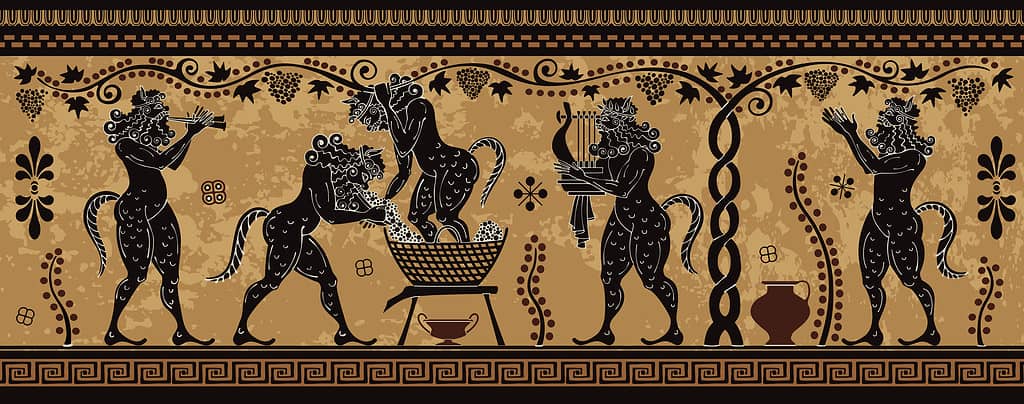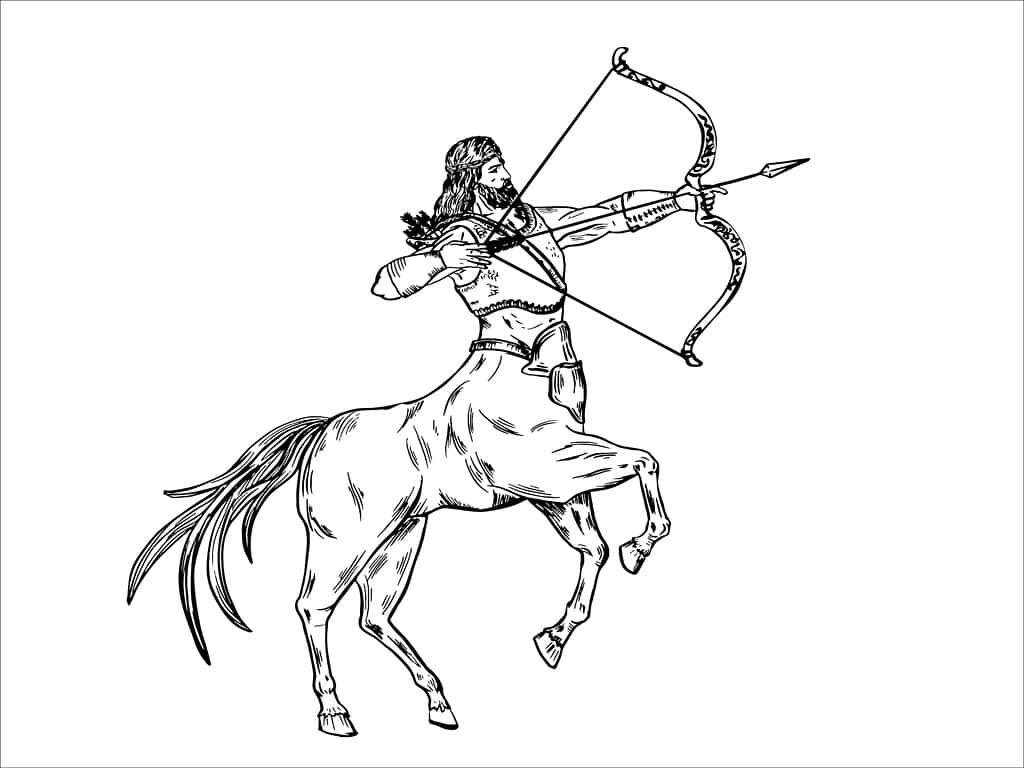There’s no shortage of mythical creatures when it comes to Greek mythology, and some are more well-known than others. Centaurs and satyrs might be two that come to mind when mythology is mentioned, but what’s the difference between the two? Keep reading to learn more about each mythical being’s origin, their differences, and what the perception of them is in modern days.
Key Differences
Centaurs and satyrs are quite different from each other, with the key differences in their appearance and behavior. Centaurs are a race of creatures with a man’s torso, arms, and head with a horse’s lower half. In Greek mythology, a satyr is a class of woodland gods that has the body of a man with a horse’s tail and ears. In this sense, they’re somewhat similar to centaurs.
However, the appearance of a satyr seems to have a range in appearance. They can appear horse-like to goat-like. In some depictions, satyrs have most of the features of a human, but with a goat’s ears, tail, and legs. They also have horns. Regardless of their appearance, satyrs are portrayed as lustful individuals. Here’s a bit more information on each:
Centaur

Chiron is one of the more “famous” centaurs and has a
comet
named after him.
©Morphart Creation/Shutterstock.com
The centaur is a staple in Greek mythology. They’re thought of as a wild group of creatures that live in the forests of Thessaly in caves. In some myths, centaurs are known to abduct women as there were no female centaurs. This idea became obsolete later when female centaurs were introduced into the mythology. Still, their barbarism and proclivity for brutality would outshine those of their race that were civil and even scholarly when it came to the human’s view of this race.
Satyr

Greek depiction of a satyr with
horse
tails and ears.
©tanys04/ via Getty Images
The word satyr might mean one of two things: wild animal or using the root sat meaning “to sow” which refers to their insatiable sexual desires. Satyrs are mischievous and lustful creatures. While their tricks are often downplayed as simply “prankish” they could also be sinister and violent. Like the centaur, they are also forest residents and live wildly. Additionally, satyrs are generally more intelligent and appreciative of finer things like music and theater, likely due to their proximity to Dionysus.
Origins
The creation of these mythical beings is a story in itself, and there is some variance in these stories depending on where or who was doing the telling. As much of mythology goes, there is an evolution in the lore as time goes on.
Centaur
Centaurs are a product of King Ixion of the Lapiths and his lust for Zeus’s wife, Hera. Ixion lusted after Hera and in an attempt to catch Ixion in his throes of sin, Zeus sent down a cloud nymph to mimic Hera’s appearance. This cloud’s name is Nephele, and the product of Ixion and Nephele’s passionate encounter led to the birth of Centaurus. Centaurus was born with deformities and for this reason, was shunned. The abandoned offspring eventually made his way to Magensia where he would mate with horses, creating a half-horse half-human race of creatures that came to be known as centaurs. Centaurus is also the name given to one of the largest constellations. Centaurs in this region continued to breed and isolated in the forests and caves of Thessaly.
Later History
Centaurs have come to be one of the most recognizable mythical creatures of Greek mythology. They also play a role in many other stories, including a titular role in the War of the Centaurs. This war began after the King of Lapiths at the time, Pirithous, invited the centaurs to his wedding. After imbibing in wine, the true nature of the centaurs came out and chaos became the main event of the night. The hybrids abducted women and attacked other guests which unfortunately led to a mass slaughter of their kind.
However, not all centaurs were brutes. Famous centaurs like Chiron and Pholus were wise and kind-hearted beasts, often passing their knowledge down to other warriors in Greek mythology. Hercules, Achilles, and Apollo are just some of the figures who were prominent in these centaur’s lives.
Satyr

Roman depiction of a satyr peeping on a goddess.
©Pieralfonso/ via Getty Images
Satyrs are followers of Dionysus. Dionysus is a god of many things in Greek mythology: wine, theater, vegetation, fertility, and festivals to name just a few. They may have come from various nymphs, or they may have been sons of the god Hermes. Either way, these forest gods were almost always close to Dionysus, embodying all the god is said to have created. This includes their indulgent behaviors regarding wine and sexual ventures. Satyrs are frequently in art and old plays. Satyr plays became their own entity, walking the line between comedy and tragedy without being too much on either side.
Like centaurs, some satyrs do not fall into the trope of the rest of their kind. Silenus is one of these satyrs. He is the chief of all satyrs and appears to have more restraint and wisdom than his brothers/subjects.
Creatures Similar to Satyrs
Some commonly confused creatures are fauns and panes. Panes have more animal than human features, like a full goat head as opposed to just horns. Fauns are more common in Roman myths and do have very satyr-like features. Both panes and fauns follow their respective gods, Pan and Faunus.
Centaurs and Satyrs in Real Life

The centaur is the symbol for the zodiac sign Sagittarius.
©Alesikka/ via Getty Images
Centaurs and satyrs don’t have much of a real-life link in a physical sense. While the imagery of centaurs may have come about from seeing men riding horses in a distance, giving the illusion of an animal with the top half of a human and the bottom half of a horse, there’s not much real-life basis in either of these creatures. Instead, like in many cases, these subjects of myths often impart wisdom or lessons of some sort within the entertainment of a story. Sometimes, they’re meant to explain some other phenomenon or make sense of things not yet understood.
Some real-life applications of myths are in astronomy, like the naming of constellations or comets. Much of astrology has ties to Greek gods or creatures from myths. Both centaurs and satyrs can be metaphors for the line between wild nature and the civility of men. Their presence in stories and art is ubiquitous enough that there is no question of their impact on ancient and modern societies.
The photo featured at the top of this post is © SpicyTruffel/Shutterstock.com
Thank you for reading! Have some feedback for us? Contact the AZ Animals editorial team.







